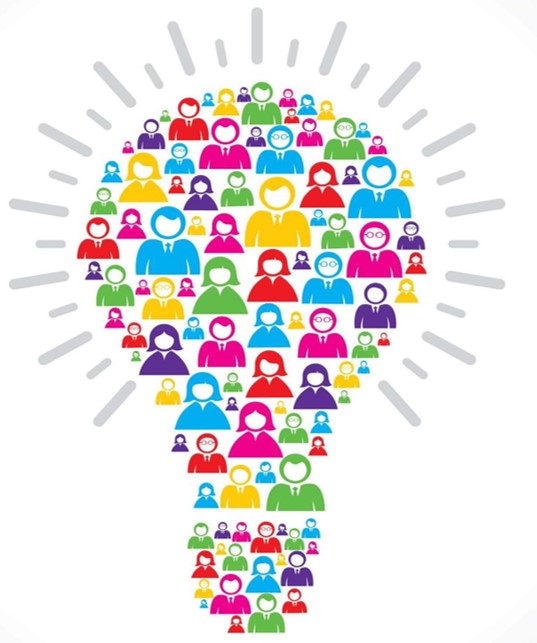Are polls and public referendums on decisions affecting the future of a country actual portrayals of citizens being involved in the running of their country?
 The People Voted
The People Voted

Not far away, in Switzerland, several times a year the government holds public referendums. Switzerland has both Mandatory Referendums, which deal with issues such as modifications to the Swiss Federal Constitution or the decision to join supranational communities, such as the United Nations or the European Union, and Optional Referendums, where if enough votes are gathered, a public referendum can be held. If the outcome is in the affirmative, the first step on the road to an initiative being voted into law is taken. One of these referendum, in June 2016, contained a popular initiative on the issue of providing a basic income for every Swiss citizen, when 130,000 citizens signed the petition calling for a referendum. This initiative fell when 76.9% of the Swiss population voted against it.
Both of the above examples really got me to wondering. These are clearly both examples of the public being involved in the future direction their respective countries are taking, and could even be seen as a form of direct diplomacy. But are they examples of citizen engagement? The truth is, the more I thought about it, the more I realized that they actually weren’t great examples of citizen engagement at all. Let’s take a closer look: in both of the above examples, the public does vote, but except for the Swiss optional referendums, the questions and issues are all spearheaded by the government. The public is asked to participate in determining the answer, but are already presented with the questions. The determining factor in what to be voted on is not in the hands of the citizens, and in the Brexit case, is not even binding (though everyone agrees that it would be impossible to not begin the proceedings to leave the EU).
 The People Want to Participate
The People Want to Participate
On the other side of the world, sits Hawaii, the 50th state in the United States, and birthplace of Barack Obama, President of the United States. A law passed determined that by the year 2045, Hawaii will produce 100% of their energy from renewable energy sources, such as wind and solar power. As a result, several companies have already launched proposals to put floating wind turbines in the channel separating the islands of Kauai and Oahu.

 How to Accommodate the People?
How to Accommodate the People?
This is coming closer to the concept of citizen engagement – and the power of citizen engagement tools, but in reality is no different than a town hall meeting or some other form of public meeting to discuss a proposal by city hall or some other municipality. Citizens can participate, ask questions, raise objections, and even work together to strike a public ordnance from being carried out or enacted into law. Once again, though, much like the public referendums mentioned above, the initial stages, the proposals to be discussed and the initiatives in question are proposed by a party other than the citizens.
Some would argue that this is the way things are meant to be, the public elects officials to care for them, to deal with issues that arise and decisions that need to be made. Some politicians have even gone so far as to claim that a referendum is illegal, as it circumvents the will of the public’s elected officials. However, while this argument that public officials are elected to care for the issues facing the general public was a perfectly valid argument 250 years ago when it would take news days, and even weeks, to spread across the country, in the age of the internet and immediate news updates, this argument no longer holds water. Same for the argument that elected officials are more knowledgeable on the subject (or are expected to be) than the common person. This may have been true when illiteracy was ripe and higher education was a rarity reserved for the elites. Today, when anyone can open a news website or read up on an issue on Wikipedia, this argument also falls to the wayside.
 To Stay or Not To Stay – That Isn’t the Question
To Stay or Not To Stay – That Isn’t the Question
What is the solution, then? The arguments presented above point out the deficiencies in a pre-technological environment from several centuries ago, and are all answered by the advancements in modern technology. Today anyone with a smartphone can read up on any subject in an instant, and can reach someone halfway across the world in the blink of an eye. It is these advancements which also provide us the solution for the question of how to reach true citizen engagement. What’s required is a technological platform that allows ALL citizens not only to help reach the answers, but also form the questions. More importantly, though, is a platform that helps users reach the right questions.
If you’ll bear with me, let’s take another look at the beginning of the article, at the Brexit referendum. The question on whether to stay in or leave the European Union is a very broad question, which is made up of the sum of all the problems the people of the UK had. Immigration policies, monetary policies, open borders, laws directed from the EU government in Brussels, these were all issues which those who wished to leave the EU wanted to address. However, because these are all relatively „small“ divisions of a larger issue, a satisfactory answer was not provided.
 21st Century Solution to an 18th Century Problem – Citizen Engagement Tools
21st Century Solution to an 18th Century Problem – Citizen Engagement Tools
Now, we can use a digital citizen engagement tools to crowdsource the question. All citizens are able to raise their questions, their doubts, and their issues. Crowdsourcing the people, in other words, to work on the national stage instead of on a single project. Feedback can come from both public officials as well as from other citizens, who can provide answers or follow-ups to the questions asked. This same platform can also provide a form of scalability, a list of priorities, as it were. The reason the question in the Brexit referendum was on whether to leave the EU or not was because the smaller issues were all lumped together into one large issue, and were never addressed. This technological platform can measure which issues the citizens feel strongest about, which they think is most important, which is the most heatedly contested. This platform can also be used to come up with solutions to the smaller issues, negating the need for a vote on a colossal issue, the results of which will reverberate for years to come.
To put it simply, using citizen engagement tools can change the style of government. Make the switch from a top-down government model, where the public officials make the decisions based on what they think is best with minimal public intake, to a bottom-up government model, where the citizens are the ones who determine what is important, what thegovernment should be focusing on, and help come up with solutions. Public officials care about what the citizens want during an election year. The day after they take office, all promises are promptly forgotten. Using a citizen engagement platform can ensure that elected officials are in touch with the public’s needs and desires all year round, even when no one is running for office.

It’s easy to assume that apathy is the main cause of this issue, but in reality each case can be much more complicated than that. Regardless of the cause, it’s undeniable that the voter turnout would be significantly higher if it was possible to vote online. There is the issue of security and verification, but if military, finance, and government organizations are already using platforms like this to gather and collaborate on highly sensitive information, there is no reason that it cannot also be used for voting.
Qmarkets has a collaborative platform which could allow not only citizens to vote on an issue and raise objections, but also to take the unprecedented step of allowing the citizens to propose issues to be debated, discussed, and enacted into law. With this platform, called Q-city, a municipality, city, and even country can have immediate access to the wills and desires of the public, and more importantly, know what the public thinks is important and needs to be dealt with.This platform helps to form an open dialogue between and within large communities, in a structured, systematic way.
Popular social networks, such as Facecbook and Twitter, are capable tools for letting elected public officials know what the issue of the day is, based on what’s trending and what goes viral. Q-city, on the other hand is designed in a way that can ensure that each discussion has both a clear goal as well as a predefined process, with the purpose of making informed decisions and achieving concrete results.
For one, I’d greatly look forward to seeing the day when the elected officials cared about my opinion on the days after Election Day. Working together, and using citizen engagement tools, I believe that day might not be so far off.
Contact Qmarkets to consult with our experts and discover how to transform ideas into results!
 The People Voted
The People Voted
